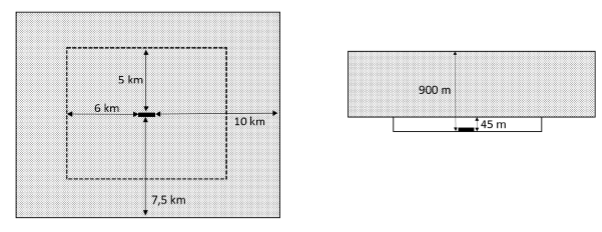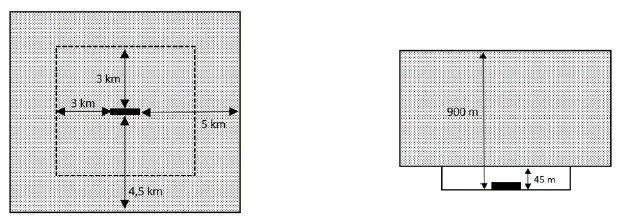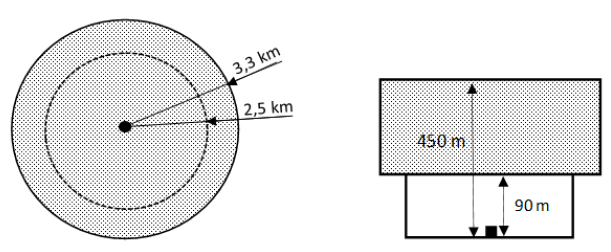BLOG POSTS
New features of the Royal Decree on UAS in Spain
In this article, we will cover the main points of the new Royal Decree 517/2024, dated 4 June, which establishes a regulatory framework for the civil use of unmanned aircraft systems (UAS), aligning with European regulations, and repeals Royal Decree 1036/2017 and Chapter XI of Royal Decree 1180/2018.
The article is divided into the key aspects addressed by the UAS Royal Decree, which will come into effect on 25 June 2024. In the coming weeks, AESA will publish new guidance materials to help all affected parties adapt to this new regulation.
General Aspects
The Royal Decree has been developed to complement the European regulations of the Implementing Regulation (EU) 2019/947, which regulates the rules and procedures applicable to UAS, and the Delegated Regulation (EU) 2019/945, concerning unmanned aircraft systems. In other words, the new Royal Decree 517/2024 establishes the legal regime that EASA left to the discretion of each Member State, such as the definition of geographical zones, where each country establishes its zones and procedures for coordination, authorisation, etc.
1. Scope of Application:
The new Royal Decree applies throughout the national territory and the airspace of Spanish sovereignty and is applicable to:
- All civil unmanned aircraft and all personnel and organisations involved in their activities.
- Air traffic service (ATS) providers and managers of aerodromes and heliports.
- Aeronautical information service providers, as well as U-Space service providers and the single common information service provider.
This new regulation does not apply in the following cases:
- If the aircraft are used in entirely enclosed indoor spaces or where the probability of the UAS escaping is very low.
- Military UAS or those used in military activities or services, and the personnel and organisations involved in them.
2. Definition of “National Standard Scenario” or “STS-ES”:
We want to highlight this definition, as in this new Royal Decree, “National Standard Scenario” or “STS-ES” is defined as the standard scenario established by the State Aviation Safety Agency (AESA) for UAS operations in the “specific” category in non-EASA activities or services.
This may cause confusion with the STS-ES-01 and STS-ES-02 scenarios published by AESA, during the transitional period allowing flights in urban environments in VLOS and operations in sparsely populated areas in BVLOS, without the need to use unmanned aircraft marked with class labels C5 or C6, respectively; these scenarios can be presented until 30 August 2024 and will be applicable until 31 December 2025.
3. Minimum Age:
The minimum age to act as a UAS operator is set at 16 years. However, to act as a pilot, this age can be reduced if the following conditions are met:
- In open category A1 with C0 aircraft or UAS with a take-off weight less than 250 grams, the minimum age is 12 years.
- In open category A1 with C1 aircraft and in categories A2 and A3, the minimum age is 14 years.
4. Minimum Insurance Obligations:
If your aircraft has a maximum take-off weight (MTOM) equal to or greater than 20 kg, insurance is mandatory. For aircraft with a weight below 20 kg, a series of exemptions have been established, making civil liability insurance mandatory in the following cases:
- In the open category, within subcategory A2.
- In the specific category, for both standard scenario (STS) flights and under the authorisation regime.
- In the certified category.
The insurance must be in force at the time of the operation, so it can be obtained on a continuous basis (annually, for example) or for the specific operation.
5. Model Aircraft Clubs or Associations:
The minimum requirements, documentation, and responsibilities that such associations or clubs must meet have been established. For more information, refer to section 2, articles 9, 10, and 11 of the Royal Decree.
Non-EASA Activities or Services
Non-EASA activities or services are defined as those excluded from the scope of Regulation (EU) 2018/1139 of the European Parliament and of the Council, Article 2.3, letter a), including military activities or services, customs, police, search and rescue, firefighting, border control, coastal surveillance, or similar activities carried out in the public interest by a body vested with public authority or on its behalf.
For these types of activities, a distinction must be made between those carried out directly by a body vested with public authority or by an operator on its behalf. For the former case, the Basic Regulation, the Delegated Regulation, and the Implementing Regulation will apply, but with the exceptions defined in the new Royal Decree. In cases of disaster and emergency, when the collaboration of operators is required, they can operate under the same conditions as the public authority responsible for the non-EASA activity or service.
The main points to consider are as follows:
1. Registration Obligations for UAS Operators of Non-EASA Activities or Services:
All UAS operators of non-EASA activities or services must register with the State Aviation Safety Agency (AESA) under the same conditions provided for in the Implementing Regulation, that is, if non-toy aircraft are operated, weighing more than 250 grams, or if the UAS is equipped with a camera, regardless of its weight.
The Security Forces regulated by Organic Law 2/1986, the National Intelligence Centre, the Customs Surveillance Directorate, and the Directorate-General of Traffic are exempt, although they can register voluntarily.
2. Exemption from Remote Identification Requirement:
For public safety reasons, in operations related to organised crime, terrorism, etc., the State Security Forces, the Police Forces dependent on the Autonomous Communities, the National Intelligence Centre, and the Customs Surveillance Directorate may operate without complying with the remote identification system requirement.
3. Minimum Age:
In this case, the minimum age for both UAS operators and pilots is set at 16 years.
4. Operations in the Specific Category:
When carried out under a standard scenario defined in the Implementing Regulation or a national standard scenario adopted by AESA, it will not be necessary to submit an operational declaration. However, the public authority will be responsible for conducting the operation in accordance with the corresponding standard scenario.
In the case of specific category operations not covered by a standard scenario, operational authorisation from AESA will not be required, but a prior operational risk assessment must be conducted, ensuring technical and professional competence. For this operational risk assessment, technical standards (AMC) published by EASA, AESA, and the SORA methodology will be valid.
Training
The type of training and Entities are divided according to the scenario and type of activity to be carried out.
1. Training and Assessment of Competencies in the Open Category:
Training in the open category has not been modified with the entry of the UAS Royal Decree. However, we review the main points:
- Subcategory A1 with drones weighing less than 250 grams:
- Familiarisation with the user manual provided by the UAS manufacturer.
- Familiarisation with the user manual provided by the UAS manufacturer.
- Subcategory A1 with drones marked as C1:
- Familiarisation with the user manual provided by the UAS manufacturer.
- Passing the online A1/A3 test provided by AESA.
- Subcategory A1 with drones weighing less than 250 grams:
- Subcategory A2:
- Familiarisation with the user manual provided by the UAS manufacturer.
- Passing the online A1/A3 test provided by AESA.
- Declaration of self-practical training.
- Passing the online A2 test.
- Subcategory A2:
- Subcategory A3:
- Familiarisation with the user manual provided by the UAS manufacturer.
- Passing the online A1/A3 test provided by AESA.
- Subcategory A3:
2. Training and Assessment of Competencies in the Specific Category:
In the case of training in the specific category, the type of operation must be taken into account:
a. Operations in European Standard Scenarios (STS):
This scenario is regulated by the Implementing Regulation, that is, the publication of the new Royal Decree has not brought about changes. To review the main aspects, theoretical and practical training is required for the standard scenario in which the operation is to be conducted.
- Theoretical training can be provided by a training entity, a UAS operator, or independently, following the syllabus provided by the Authority, but AESA is responsible for conducting the theoretical knowledge exam.
- Practical training will be provided by Recognised Entities or UAS Operators declared to AESA for training purposes.
b. Operations in National Standard Scenarios conducted within the framework of non-EASA activities or services (STS-ES):
Remember that national standard scenarios will be defined for non-EASA activities or services. In this case, the following training is required:
- A theoretical knowledge certificate issued by AESA.
- Practical skills training for the corresponding standard scenario, issued by an Authorised Entity.
Authorised Entities must meet the same requirements as Recognised Entities and UAS operators conducting practical skills training and assessment activities.
c. Operations Under Authorisation Regime
Training for the category under the operational authorisation regime must be provided by a Designated Entity. These Entities must have submitted a declaration to AESA, which should include, among other things:
- Corporate name and main details
- Identity of the training manager
- Identity of the safety manager responsible for the development and proper maintenance of the safety policy
- Identification of instructors, examiners, and evaluators
- Management system responsibilities
- The UAS operations for which training will be provided
The Royal Decree establishes the requirements that these entities must meet for the development of their activities, which may include:
- The necessity to implement a management system that includes a safety policy, hazard identification, effectiveness of mitigation measures, among others, and a quality management system.
- The necessary documentation
- The incident reporting system
- Designation and requirements of personnel. In the case of instructors, examiners, and evaluators, minimum qualifications and training must be met, such as the instructor, examiner, and evaluator certificates issued by AESA.
Use of Airspace and UAS Geographical Zones (Zoning)
1. UAS Geographical Zones around Aerodromes or Heliports:
Until now, it was necessary to establish coordination when the operation was within 8 km of the affected aerodromes or heliports. With the new regulations, these zones have been redefined; safety distances are established based on the type of aerodrome and heliport. To establish such coordination, explicit acceptance from the infrastructure managers is required:
-
- Civil aerodromes for public use and military aerodromes: up to 45 m in height, an area of 6 km extending from the ends of the runway and 5 km measured from the sides of the runway is defined.
Above 45 m in height, it extends 10 km from the ends of the runway and 7.5 km, measured horizontally:

- Civil heliports for public use and military heliports: up to 90 m in height, the distance extends both in the direction of the runway and horizontally to 2.5 km, and above 90 m in height, it extends to 3.3 km.

Civil aerodromes for restricted use: up to 45 m in height, the distance extends both in the direction of the runway and horizontally to 3 km.
Above 45 m in height, it extends 5 km from the ends of the runway and 4.5 km, measured horizontally:

Civil heliports for restricted use: up to 90 m in height, a circular area of 2.5 km is defined, and above 90 m in height, it extends to 3.3 km.

2. UAS Geographical Zones in Controlled Airspace and FIZ Zones
If operating below 60 metres in height and outside the aerodrome safety distances (defined in the previous point, in the section of civil aerodromes for public use), in VLOS mode, UAS operators are exempt from establishing coordination with ATS providers (mainly, Enaire, SKYWAY, and SAERCO). This means that it will not be necessary:
- To coordinate with ATS providers
- To submit the Flight Plan (FPL)
- To have a radio operator’s qualification or have coordinated EARO.
In the case of operating above 60 m or within the aerodrome safety distances, it will be necessary to have all the points mentioned above.
All other types of geographical zones already contemplated remain in place, such as, for example, Restricted Zones for Photographic Flight (ZRVF), dangerous zones, restricted or prohibited zones, restricted zones for environmental protection, among others.
Critical infrastructure protection zones are also defined, such as energy plants, port and railway infrastructures, roads, and transport infrastructures, etc. In all of them, it will be necessary to maintain the safety distance unless authorised by the infrastructure.
Another important point is the UAS geographical zones defined for urban environments.
a. Urban environments are defined as:
- Population centres with areas consolidated by buildings;
- Residential, commercial, or industrial areas whose land has, cumulatively, at least, road access, paved public roads for pedestrian access, water drainage, and public lighting; and
- Recreational areas, which are publicly accessible and have constructions or facilities, permanent or temporary, for leisure, recreation, or sports, including beaches that meet both requirements as well as parks or gardens under the jurisdiction of local authorities.
b. The requirement to submit communications to the Ministry of the Interior for operations in urban environments remains, but the submission period has been reduced to 5 calendar days before the flight.
c. In the open category, the pilot must ensure that the UAS does not fly over buildings, whether privately or publicly owned, unless express authorisation is obtained from the owner or responsible administrator of the infrastructure and must maintain the following safety distances:
- In subcategory A1 with C1 marked aircraft, a horizontal distance of 5 m from buildings must be maintained.
- In subcategory A2 with C2 marked aircraft, the distance will be 30 m, which can be reduced to 5 m when using the low-speed mode.
Registrations
UAS operators, as established in the Implementing Regulation, must be registered in the Member State where they reside or have their main headquarters. In the case of Spain, the registration will be done with AESA. With the publication of the new Royal Decree, operators engaged in non-EASA activities or services are also required to register (except for the Security Forces, the CNI, the Customs Surveillance Directorate, or the DGT).
Additionally, a new Register of Unmanned Aircraft has been created by the Ministry of the Interior. This register has been created to prevent, investigate, or detect the commission of criminal and administrative offences, including protection and prevention against threats to public security. The following aircraft must be registered:
- With an MTOM equal to or greater than 250 grams
- Aircraft equipped with a sensor capable of capturing personal data, regardless of the weight of the UAS
- When they are not classified as toys.
It will be mandatory to report the transfer of unmanned aircraft, their loss, and the inability to operate them.